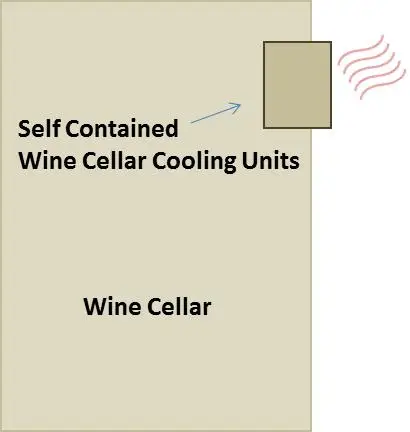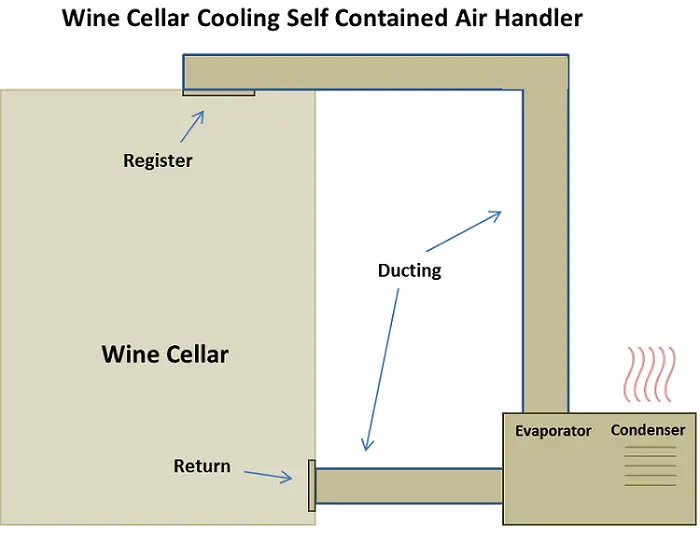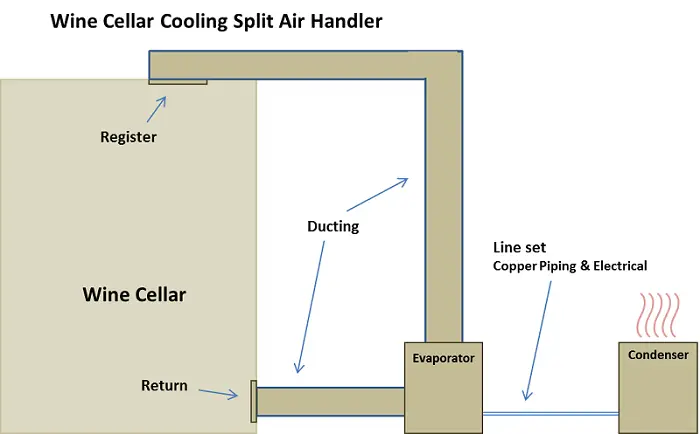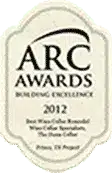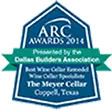
Wine Cellar Cooling Units Wine Cellar Specialists
One of the crucial steps in wine cellar construction is choosing the right type of wine cooling unit. It should be done correctly before the design phase begins. At Wine Cellar Specialists Dallas, we consider many factors when setting up the wine refrigeration system. These include the wine room insulation, vapor barrier, and the construction of the walls and ceiling. Your wine cooling system must be reliable, which means it should be able to maintain a stable temperature with minimal variance over time.
Deciding Which of the Wine Cellar Cooling Units Best Suits Your Needs According to Experts in Dallas
Air conditioning systems for homes are not intended for wine storage. These units are not designed to achieve the ideal temperature and humidity levels required for preserving the desirable characteristics of wines.
In this article, we will discuss the four main types of wine cellar cooling systems. Each type of refrigeration unit has its advantages and disadvantages. We will provide illustrations that will help you understand the fundamental benefits, features, and differences between the different types of climate control systems.
Keep in mind that our primary goal is to create constant and optimum wine storage conditions in your custom wine cellar. The following factors must be taken into account:
- Location and size of your wine cellar
- Financial requirements (initial and running cost)
- Constraints
- Ease of maintenance
It is always best to consult a specialist when choosing the size of the unit for your wine cellar. Wine Cellar Specialists will perform a heat load calculation to determine the correct size of wine cooling unit needed for a project. The amount of glass and heat sources near your wine room will affect the calculated heat load. Installing the wrong type and size of refrigeration system will result in wine storage problems and can result in a waste of investment.
The 4 Primary Types of Wine Cellar Cooling Units Used by Dallas Experts
- Self-Contained Through-the-Wall Wine Cellar Cooling Systems
- Ducted Self-contained Air Handler Wine Cellar Climate Control Systems
- Ducted Split Air Handler Wine Cellar Climate Control Systems
- Ductless-Split Wine Cellar Refrigeration Systems
1. Self-Contained Through-the-Wall Wine Cellar Cooling Systems
The self-contained through-the wine cellar cooling units, also known as a forced-air cooling units, are considered the simplest and easiest to install. The evaporator and condenser are housed in a single unit and are designed for wall mount installation.
We will choose the best wall and exhaust for the placement of your self-contained cooling system. Most of the self-contained wine cooling systems are mounted on an interior wall and the hot air and noise produced are exhausted into an adjacent room. The exhaust room must have good ventilation to accommodate the heat dissipated from the unit. It can be a mechanical room, basement, garage, or furnace room.
An exhaust room that is too small or poorly ventilated will have adverse effects on the efficiency of your wine cooling system. Our team always makes sure that the adjacent room is at least the same size as your wine room and has a temperature that does not exceed 80 degrees Fahrenheit.
Some self-contained wine refrigeration units can be installed on an exterior wall, requiring external venting. In this setup, it is essential to purchasing a wine cooling unit from a manufacturer that offers a model engineered to operate efficiently in locations with the highest possible temperatures.
Keep in mind that self-contained wine cellar cooling units are typically sealed by the manufacturer and have to be removed from the wine room and shipped back to them for repair or maintenance service.
2. Ducted Self-Contained Air Handler Wine Cellar Climate Control System
The ducted self-contained air wine cooling unit handler contains the evaporator and condenser in one unit like the self-contained through the wall system. Instead of mounting the equipment to the wall, the unit is placed in a larger adjoining room that is well ventilated for proper heat dissipation. Ductwork is required, which must be done by an HVAC expert.
3. Ducted Split Air Handler Wine Cellar Climate Control Systems
Ducted split air handler wine cooling units are the quietest of the types of wine refrigeration systems. The evaporator and condenser are completely separate units and installed in different locations. The evaporator is placed inside the wine cellar, while the condenser is located outdoors, resulting in a virtually quiet operation. Ducting using copper piping and electrical wiring requires the help of a professional.
4. Ductless-Split Wine Cellar Refrigeration Systems
Ductless split wine cellar cooling units also offer many benefits. However, they are a more expensive option than other types of wine refrigeration systems. No exhaust is needed for venting because the noisier component (the condenser) can be placed separately from the evaporator. Fan noise is eliminated. A simple line set will be used to connect these two components. These wine cooling units can be serviced on-site, making them more convenient and efficient for the owner.
Other advantages of the ductless split wine cellar cooling unit include longer life expectancy and straightforward installation.
How Wine Cellar Specialists in Dallas Can Help You Choose One of the Best Wine Cellar Cooling Units for Your Project
If you need professional help, please send us a request, and one of our specialists will contact you. We help you understand the specific options and constraints for each type of wine cellar refrigeration system.
Wine Cellar Specialists has completed beautiful and functional custom wine cellars. These projects provide information about the specific wine cooling units used and how they were installed.
You can talk to one of our experts at +1 (972) 454-0480.

 Dallas
Dallas 
